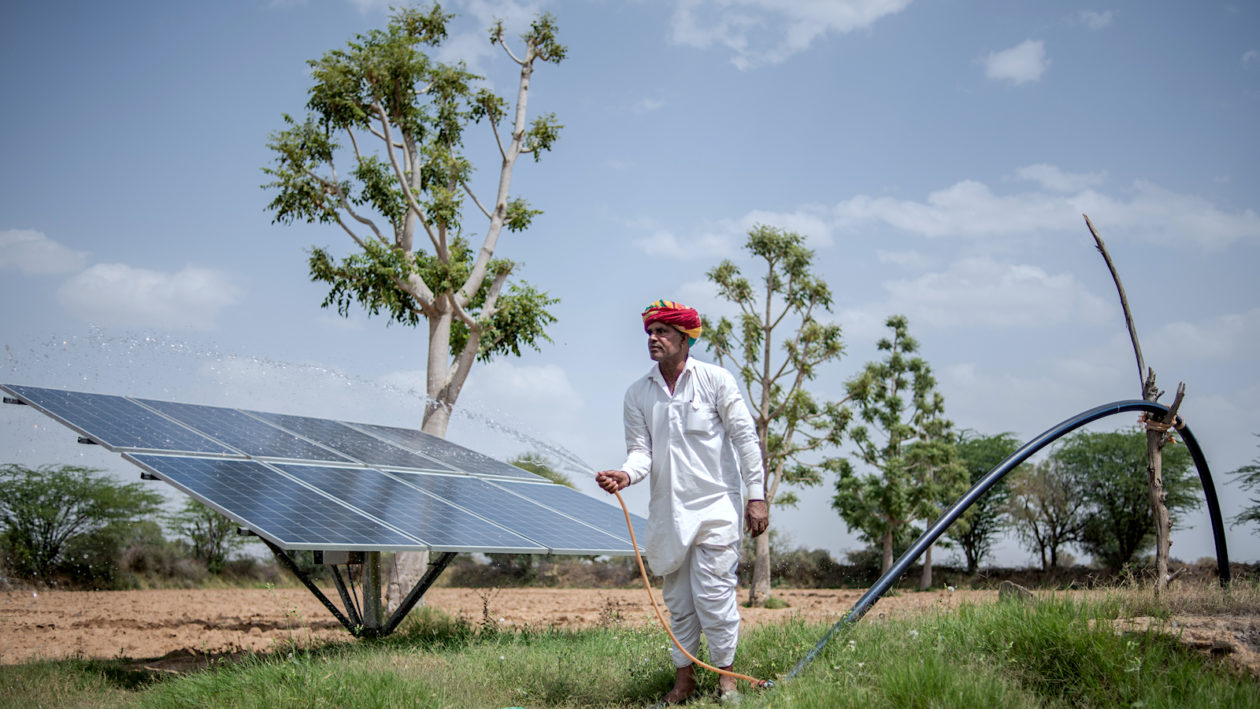

Photo: Hari Ram uses a solar-powered pump to supply water to his farm in Solawata, India. REBECCA CONWAY / GETTY IMAGES
There is a solar-powered revolution going on in the fields of India. By 2026, more than 3 million farmers will be raising irrigation water from beneath their fields using solar-powered pumps. With effectively free water available in almost unlimited quantities to grow their crops, their lives could be transformed. Until the water runs out.
The desert state of Rajasthan is the Indian pioneer and has more solar pumps than any other. Over the past decade, the government has given subsidized solar pumps to almost 100,000 farmers. Those pumps now water more than a million acres and have enabled agricultural water use to increase by more than a quarter. But as a result, water tables are falling rapidly. There is little rain to replace the water being pumped to the surface. In places, the underground rocks are now dry down to 400 feet below ground.
There is little rain to replace the water being pumped to the surface. In places, underground rocks are now dry down to 400 feet below the surface.
That is the effective extraction limit of the pumps, many of which now lie abandoned. To keep up, in what amounts to a race to the bottom of the diminishing reserves, richer farmers have been buying more powerful solar pumps, leaving the others high and dry or forcing them to buy water from their rich neighbors.
Water wipeout looms. And not just in Rajasthan.
Solar pumps are spreading rapidly among rural communities in many water-starved regions across India, Africa, and elsewhere. These devices can tap underground water all day long at no charge, without government scrutiny.
For now, they can be great news for farmers, with the potential to transform agriculture and improve food security. The pumps can supply water throughout the daylight hours, extending their croplands into deserts, ending their reliance on unpredictable rains, and sometimes replacing existing costly-to-operate diesel or grid-powered pumps.
But this solar-powered hydrological revolution is emptying already-stressed underground water reserves — also known as groundwaters or aquifers. The very success of solar pumps is “threatening the viability of many aquifers already at risk of running dry,” Soumya Balasubramanya, an economist at the World Bank with extensive experience of water policy, warned in January.
An innovation that initially looked capable of reducing fossil-fuel consumption while also helping farmers prosper is rapidly […]
Full article: e360.yale.edu
Clean water is essential for life, yet millions of Americans unknowingly consume contaminants through their…
Human brains contain higher concentrations of microplastics than other organs, according to a new study, and the…
From the Office of the Governor: In anticipation of a multi-day, significant atmospheric river in Northern California,…
From Governor Newsom: Scientists, water managers, state leaders, and experts throughout the state are calling…
Photo: A harmful algal bloom in Milford Lake, Kansas, made the water appear bright green.…
An expanded plastic foam coffee cup is at a donut shop in Monterey Park, California.…